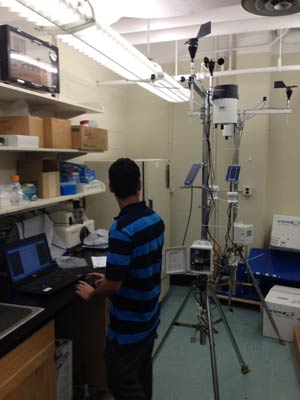FPL Researchers Gear Up to Collect Weather Data to Evaluate Post-Harvest Operations in Senegal and Kenya
September 30, 2019

The weather plays a crucial role in crop post-harvest operations such as when to harvest, harvest duration, drying and storage. When grain becomes physiologically mature to harvest, its dry down in the field is dictated by environmental temperature, relative humidity (RH), wind and precipitation (rainfall). Farmers typically try to take advantage of allowing the crop to dry naturally on the field before they harvest. However, the length of time farmers wait patiently for crops to dry need to be balanced with field losses that could be incurred due to insect pests, vermin and mold and the need to prepare the land for the next crop.
In the humid tropics where the peak of the rainfall sometimes occurs at the harvest season, harvest can be delayed and drying becomes painstakingly slow because there are very few favorable days conducive to using open-air sun drying, which is the primary method used for drying crops. Additionally, intermittent re-wetting cycles on harvested piles of crop and crops laid out to dry are highly susceptible to molding and mycotoxin contamination. Researchers at the USAID FPL lab led by Purdue University who are working to test and deploy appropriate crop drying technologies are deploying a weather station at their collaborating partners research stations in Kolda, Senegal and Kakamega, Kenya. The weather stations will be used to collect hourly data on temperature, RH, wind speed and direction, rainfall, and solar radiation, which will be used to evaluate crop post-harvest conditions in these regions and the performance of two appropriate drying technologies to be deployed by FPL researchers in comparison to traditional methods. The weather data would also provide data for researchers to model field and open-air sun drying dry down rates as well as determine grain spoilage susceptibility conditions in storage throughout the year.


